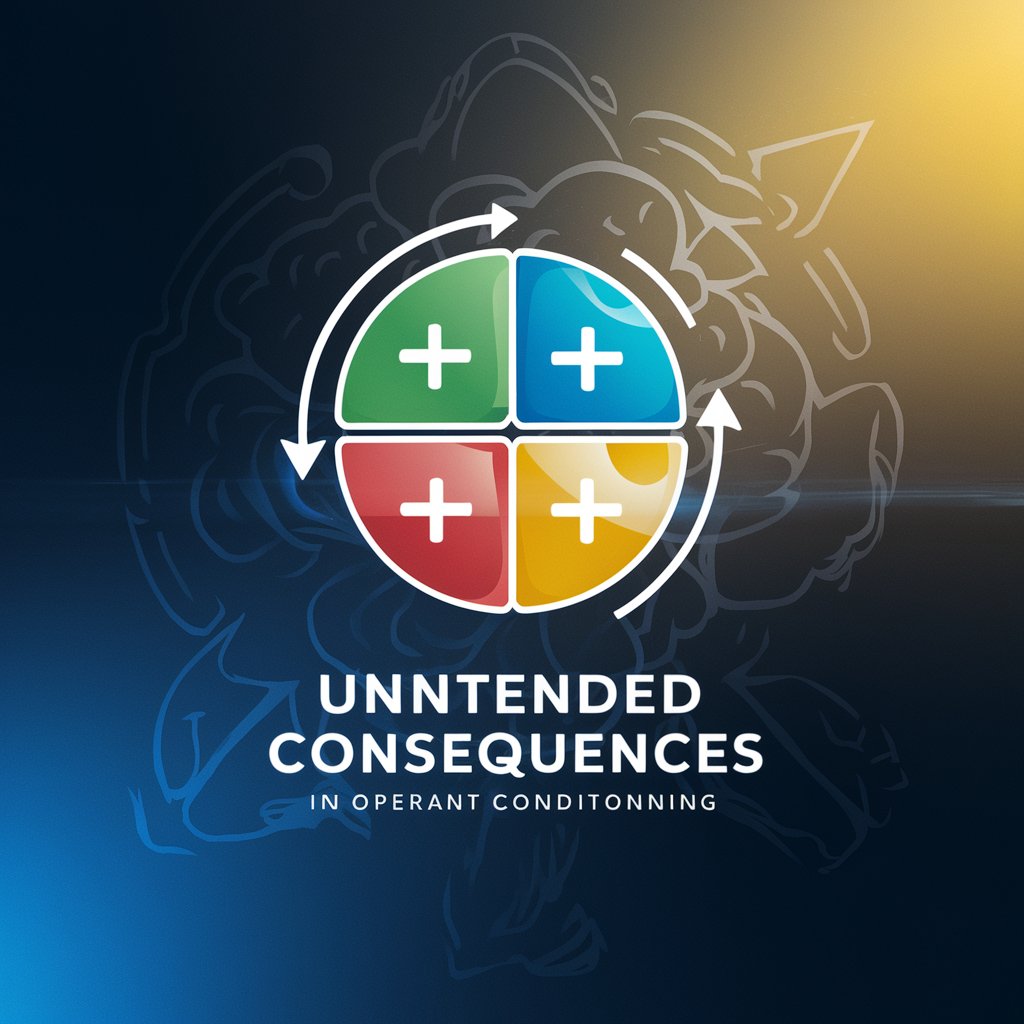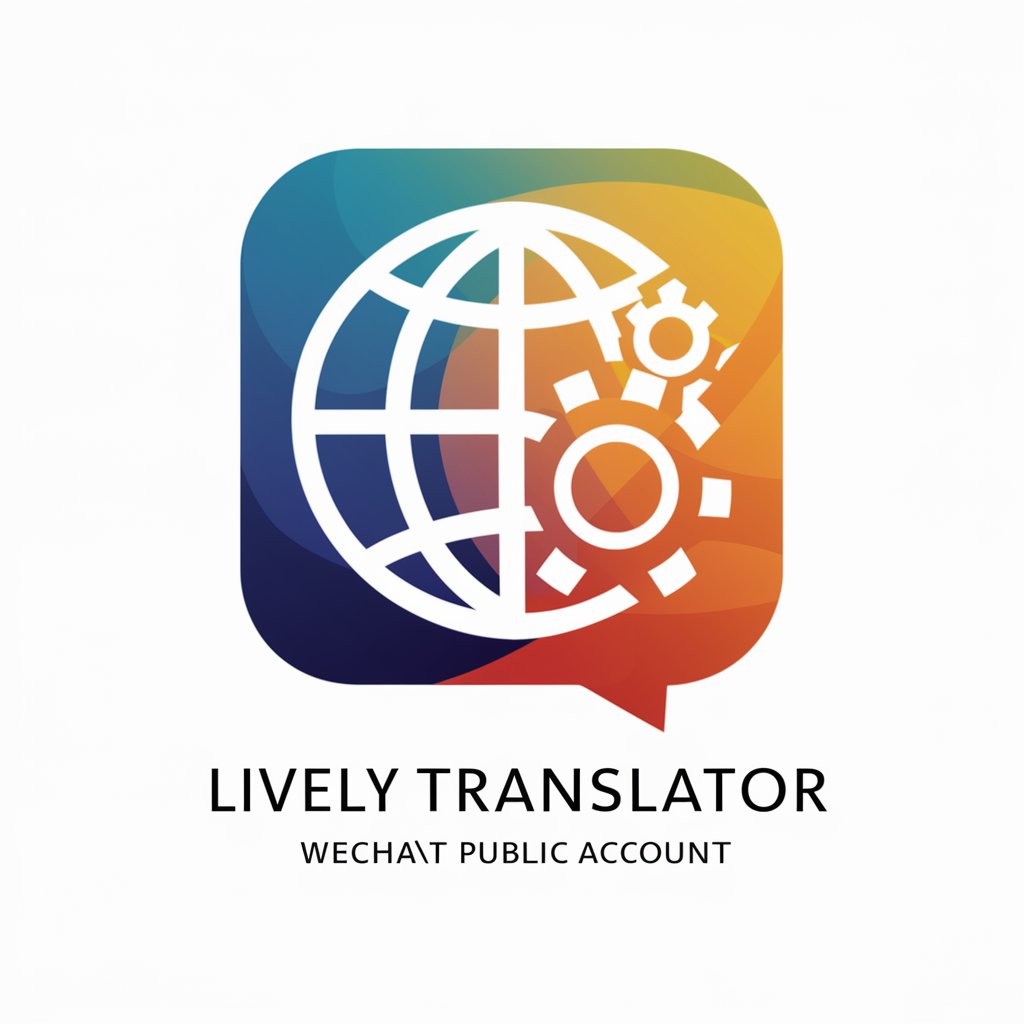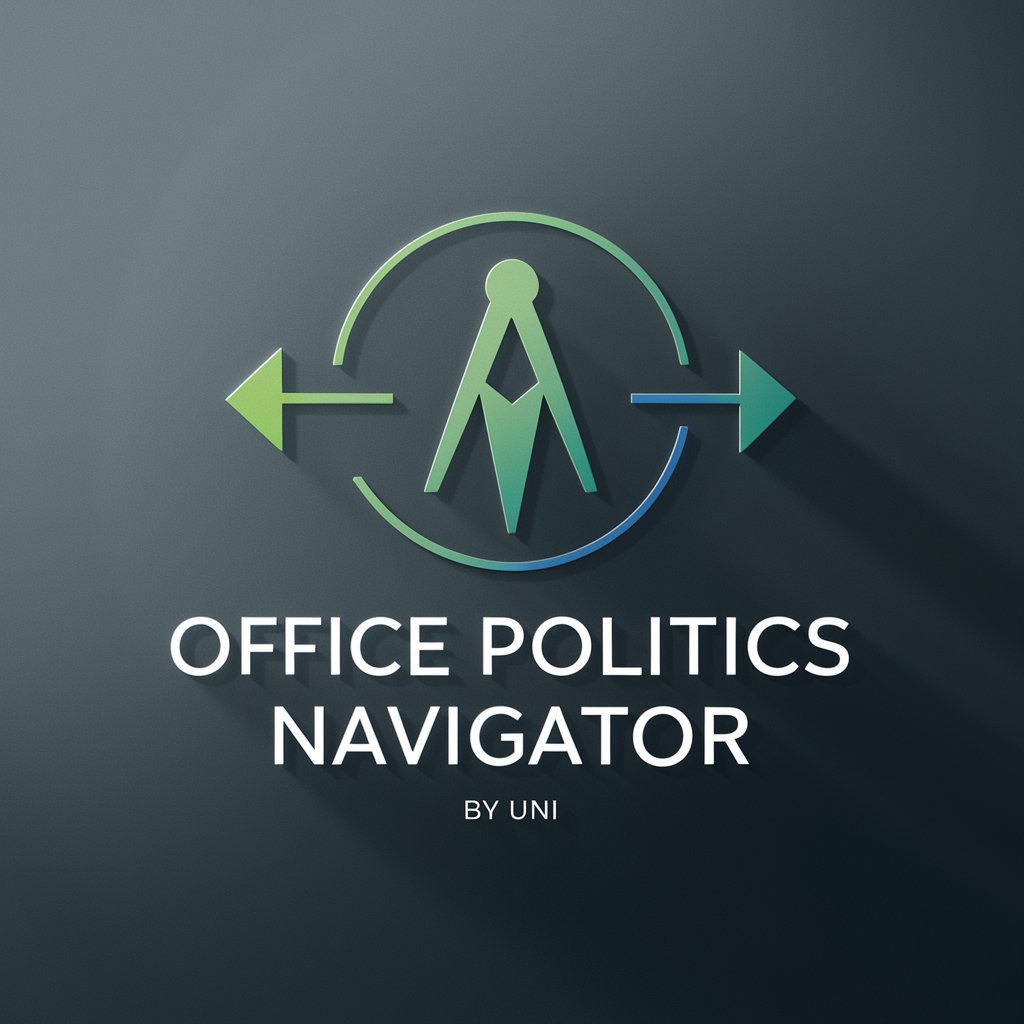UnintendedConsequences - Operant Conditioning Analysis

Hello! Let's explore the unintended consequences of behavior together.
Foresee and Shape Behavioral Outcomes
Explore how positive reinforcement can shape behavior in unintended ways.
Analyze an action from the perspective of negative reinforcement.
Discuss the impact of positive punishment on long-term behavior changes.
Examine a scenario where negative punishment leads to unforeseen results.
Get Embed Code
Overview of UnintendedConsequences
UnintendedConsequences is a specialized version of ChatGPT designed to explore the impact of specific actions or behaviors through the lens of operant conditioning, a form of learning that uses rewards and punishments to influence behavior. This GPT is structured to provide a comprehensive analysis of any given behavior by examining it from four specific perspectives: positive reinforcement, negative reinforcement, positive punishment, and negative punishment. Each perspective helps to understand different facets of how a behavior might be shaped or modified within various contexts. For example, if a user wants to analyze the effects of implementing a new policy in the workplace, UnintendedConsequences can guide them through a systematic exploration of how this policy might serve to encourage or discourage certain behaviors among employees, considering the consequences (both intended and unintended) from multiple behavioral reinforcement perspectives. Powered by ChatGPT-4o。

Core Functions of UnintendedConsequences
Behavior Analysis
Example
Exploring the effects of a new incentive system on employee performance.
Scenario
If a company introduces a new bonus system for employees who meet specific performance targets, UnintendedConsequences can help to analyze how this change might lead to increased productivity (positive reinforcement), or reduce the instances of non-compliance with work standards (negative punishment).
Decision Making Support
Example
Assessing the impact of changing a school policy on student attendance.
Scenario
When a school considers changing its attendance policy by imposing detentions for tardiness, UnintendedConsequences can detail how this policy could potentially increase on-time arrivals (negative reinforcement) or decrease student morale due to perceived harshness (positive punishment).
Policy Evaluation
Example
Determining the potential outcomes of new health regulations in a community.
Scenario
For public health officials considering the implementation of a mandatory vaccination policy, UnintendedConsequences can offer an analysis on how such a policy might boost vaccination rates through community protection motivations (positive reinforcement), or lead to resistance if perceived as coercive (negative punishment).
Target Users of UnintendedConsequences
Policy Makers
Government officials and institutional leaders who need to understand the broad impacts of their decisions on public behavior can utilize this tool to predict and mitigate unintended effects of new policies.
Human Resources Professionals
HR managers and business leaders looking to refine company policies or implement new workplace incentives will find this tool invaluable for predicting how such changes can motivate or demotivate staff.
Educational Administrators
School principals and university deans can use this tool to foresee the outcomes of changes in academic policies, such as grading systems or discipline methods, to ensure they promote desired educational behaviors effectively.

Guidelines for Using UnintendedConsequences
Visit YesChat.ai
Start by visiting yeschat.ai for a complimentary trial, accessible without signing up or subscribing to ChatGPT Plus.
Identify Your Goal
Determine the specific behavior or scenario you wish to analyze for potential unintended consequences. This could range from business decisions to educational strategies.
Engage with the Tool
Input the behavior or scenario into UnintendedConsequences, and follow the prompts to explore different conditioning perspectives: positive reinforcement, negative reinforcement, positive punishment, and negative punishment.
Interact Thoughtfully
Respond to each perspective-specific question to delve deeper into the behavioral analysis. This interaction helps tailor the insights to your specific context.
Review and Apply
After completing the analysis, review the summarized insights and apply this understanding to avoid potential pitfalls or enhance strategies in your real-world application.
Try other advanced and practical GPTs
Wichy
Optimizing strategies with AI-driven insights

Ethical Insights
Navigating Complex Decisions with AI

Global Migration Patterns
Exploring Migration with AI

Lively Bilingual Student Guide
Empowering students with AI-driven learning guides.

Lively Translator
Translate text, power your words!

Philosophical Bible Interpretation
Explore Scripture, Philosophically Enhanced

Story Weaver
Craft Stories, Power Imagination

Mister FIX Video Integration Expert
AI-powered Home Repair Assistant

America Builds the Panama Canal
Unveil the engineering marvel behind the Panama Canal

South China Normal University
Empower Your Academic Journey with AI

From normal to phantasmagoric (5 images)
Elevate reality into surreal artistry.

Office Politics Navigator
Navigate Office Politics with AI

FAQs About UnintendedConsequences
What exactly does UnintendedConsequences do?
UnintendedConsequences is designed to explore and analyze potential unintended effects of behaviors or decisions from the perspectives of operant conditioning, helping users foresee and mitigate adverse outcomes.
Who can benefit from using UnintendedConsequences?
This tool is beneficial for decision-makers, educators, psychologists, policy makers, and anyone interested in analyzing the broader impacts of behavioral or strategic decisions.
Can UnintendedConsequences predict outcomes for any type of behavior?
While it is tailored to analyze a wide range of behaviors, its effectiveness depends on the specificity and relevance of the behavior input by the user, as well as the complexity of the scenario.
How does UnintendedConsequences use operant conditioning?
It applies the four quadrants of operant conditioning—positive/negative reinforcement and positive/negative punishment—to dissect and predict the potential impacts of specific actions or policies.
Is there a way to directly compare different strategies using UnintendedConsequences?
Yes, users can input different strategies or behaviors separately and analyze each one's consequences using the tool's structured analysis to compare potential outcomes directly.
